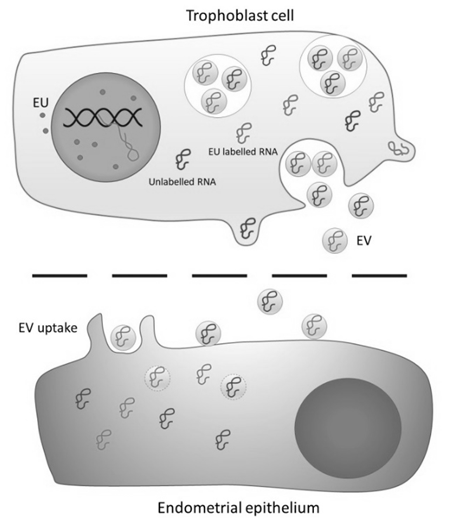#UT-001
SUMMARY
Our new method of selection of embryos suitable for uterine transfer and implantation relies on
- contacting in vitro responder cells with extracellular vesicles isolated from an IVF embryo to be transferred into a female subject and/or with a conditioned medium from the IVF embryo,
- determining, in the responder cells, an amount of at least one RNA transcript, and
- predicting pregnancy outcome of the embryo transfer based on the determined amount of the RNA(s) transcript(s).
We have discovered specific RNA transcripts which expression level in endometrial cell lines (responder cells) are indicative of the embryo quality and allow to establish an implantation prognosis.
BACKGROUND
In vitro fertilization (IVF), is the most common and effective type of assisted reproductive technology to help women becoming pregnant. A critical step of this procedure is the transfer of the embryo produced in vitro into the women’s uterus. Current IVF procedures face challenges in embryo implantation failure, as the communication between embryos and the uterine environment is not well understood, leading to inefficiencies in pregnancy rates, multiple IVF cycles needed, causing lasting economic, physical and mental health impact.
FEATURES AND KEY BENEFITS
- Higher successful implantation rates than with reference methods. Example:
Selecting embryos which conditioned culture media induces a decrease of ZNF81 expression (RNA transcript) in RL95-2 cells (endometrial cell-line) down to 4 million copies per 10 ng of input RNA would have result in a 79% of successful embryo implantations. - Non-invasive/fully in-vitro;
- Quick, reliable, easy to standardize and cost-effective.
- Reducing number of unwanted multiple pregnancies
AVAILABLE
for non-exclusive licencing
or for research collaboration
CONTACT
University of Tartu, Centre for Entrepreneurship and Innovation, tto@ut.ee
Alina Paas, alina.paas@ut.ee




